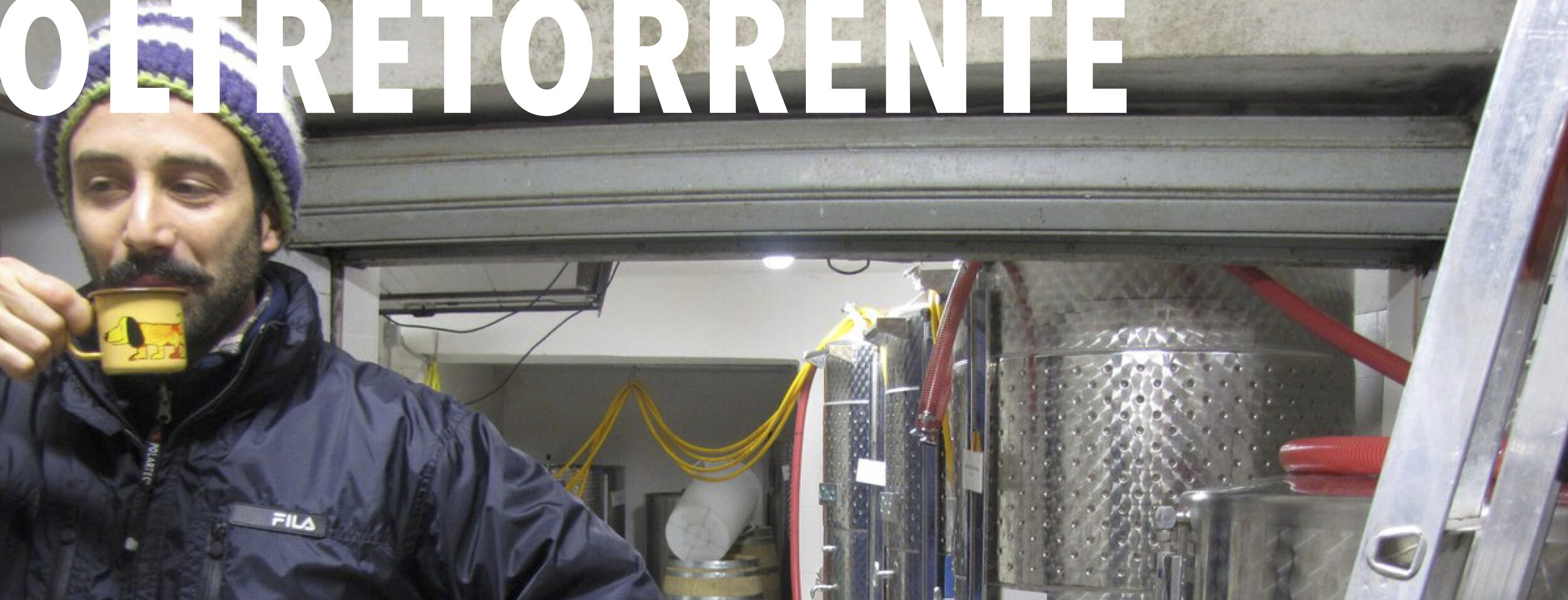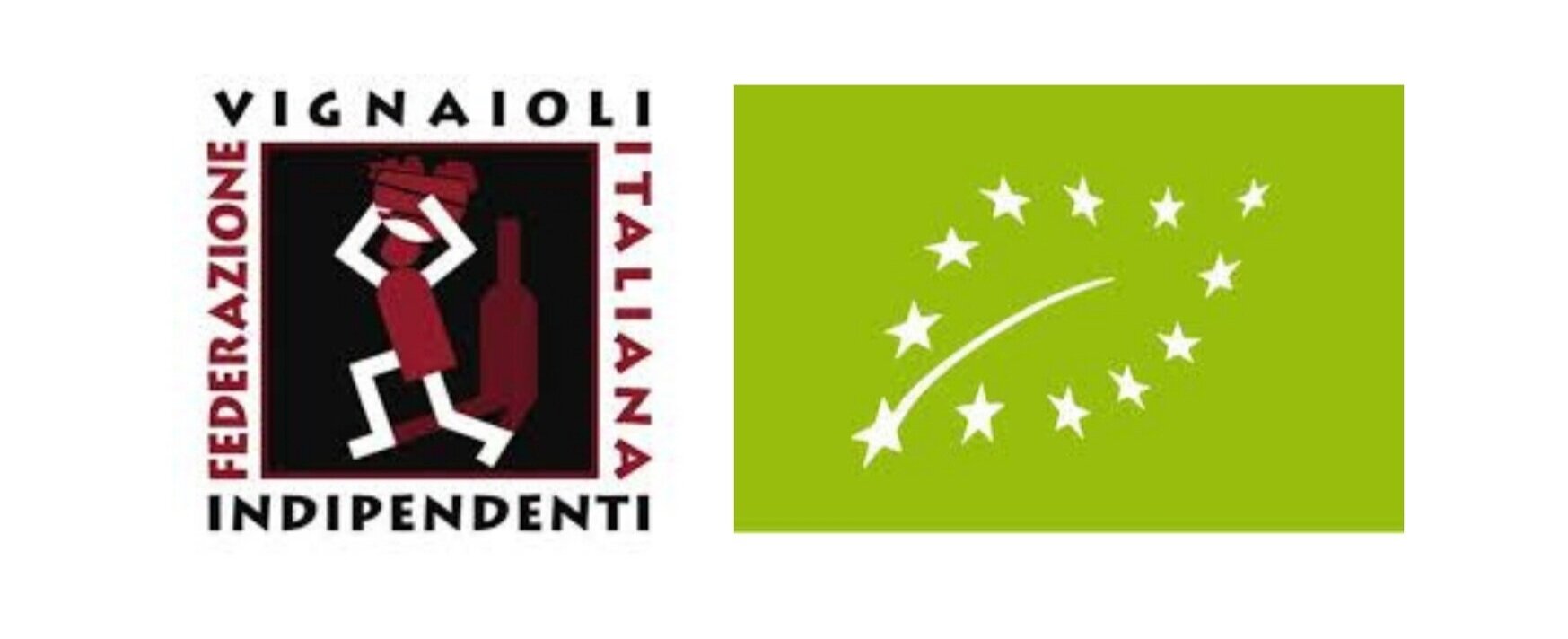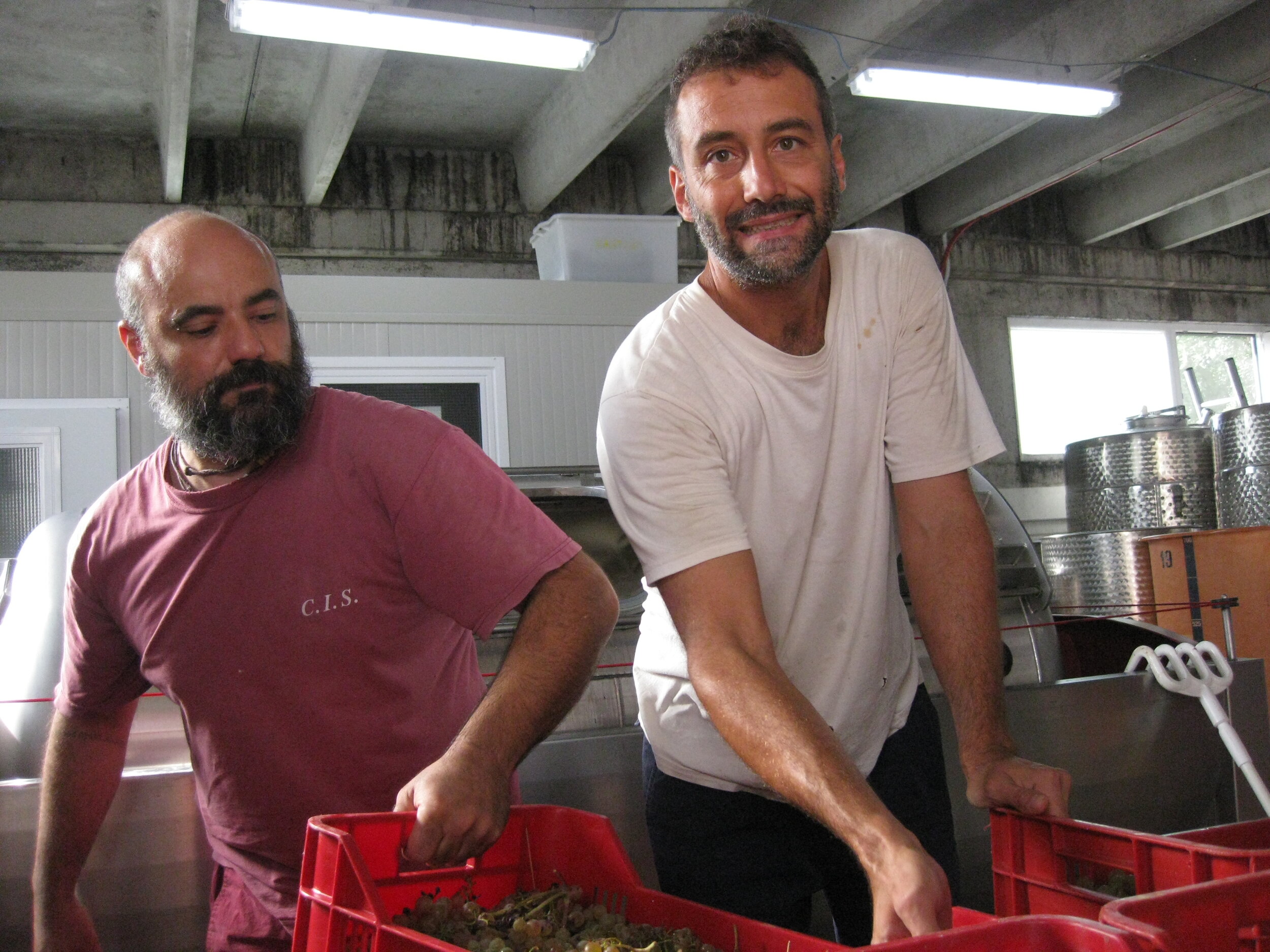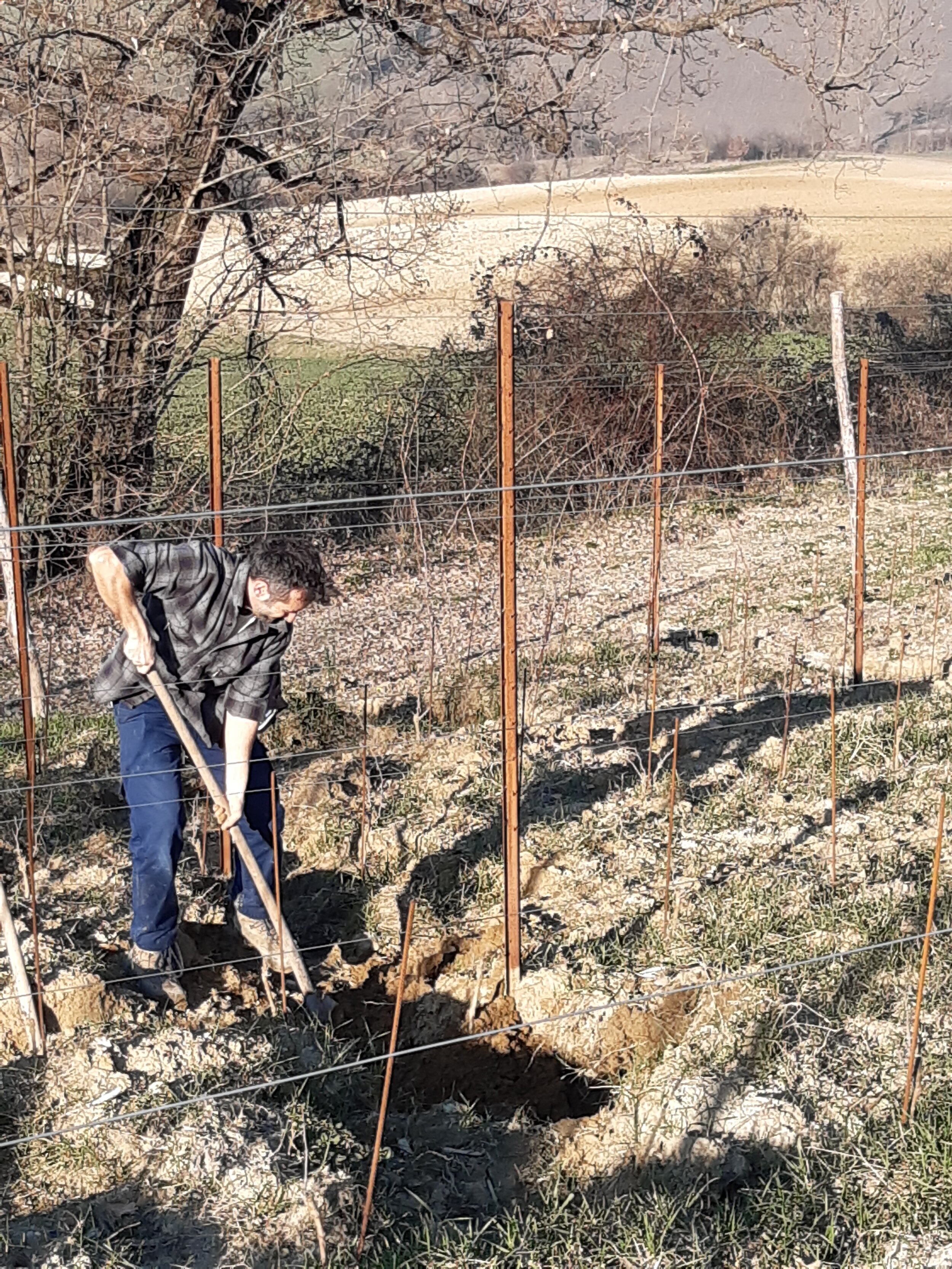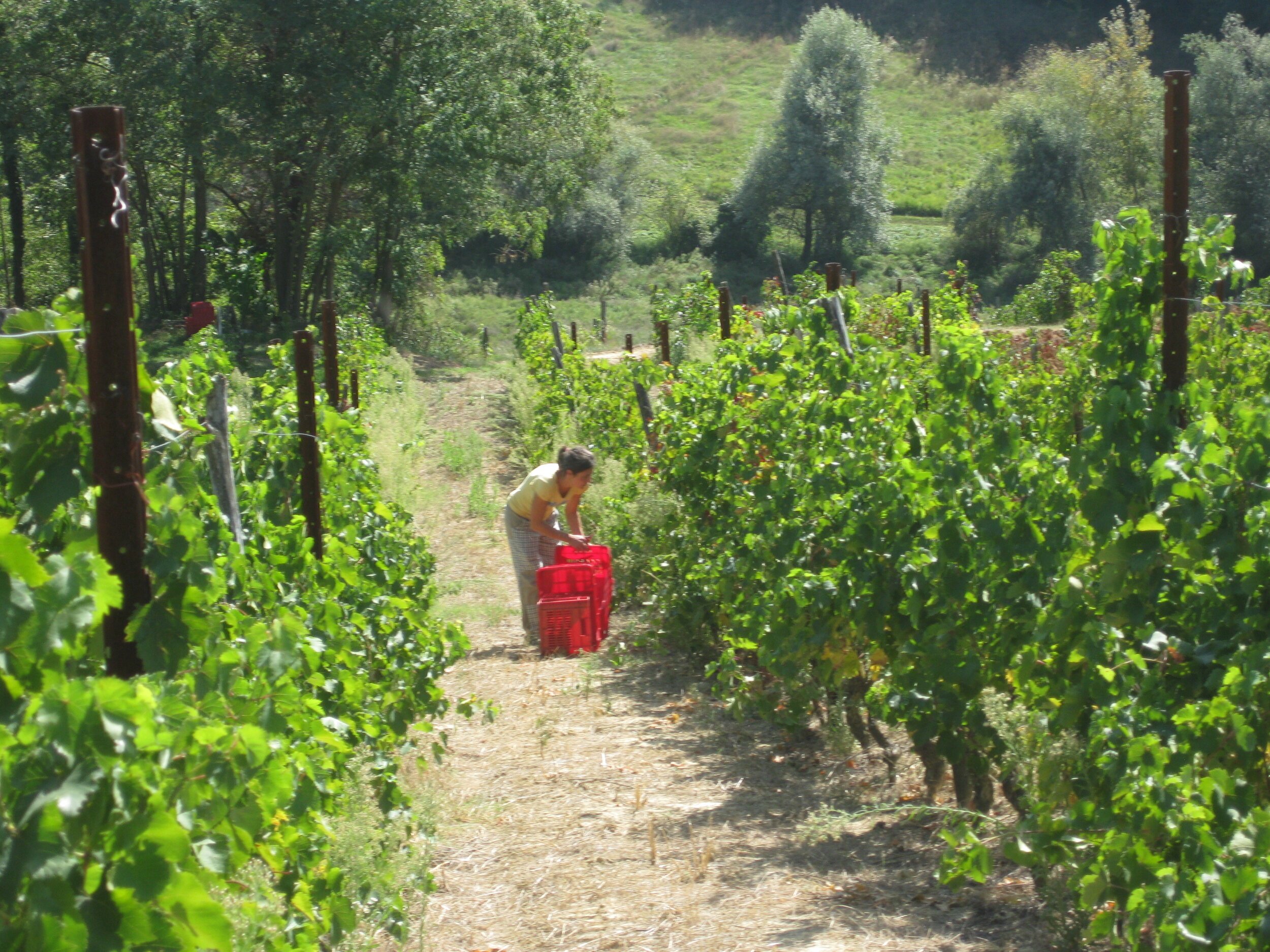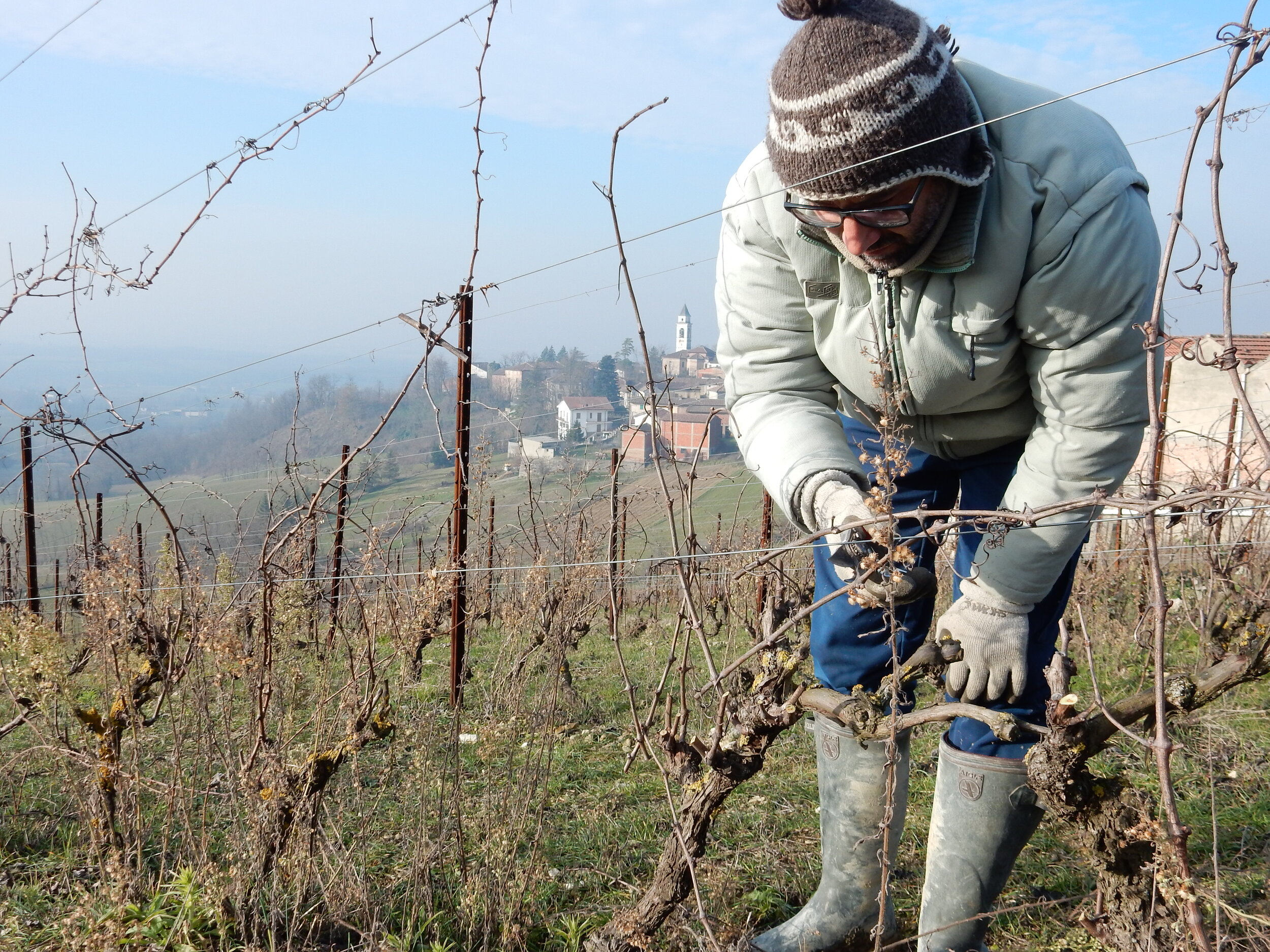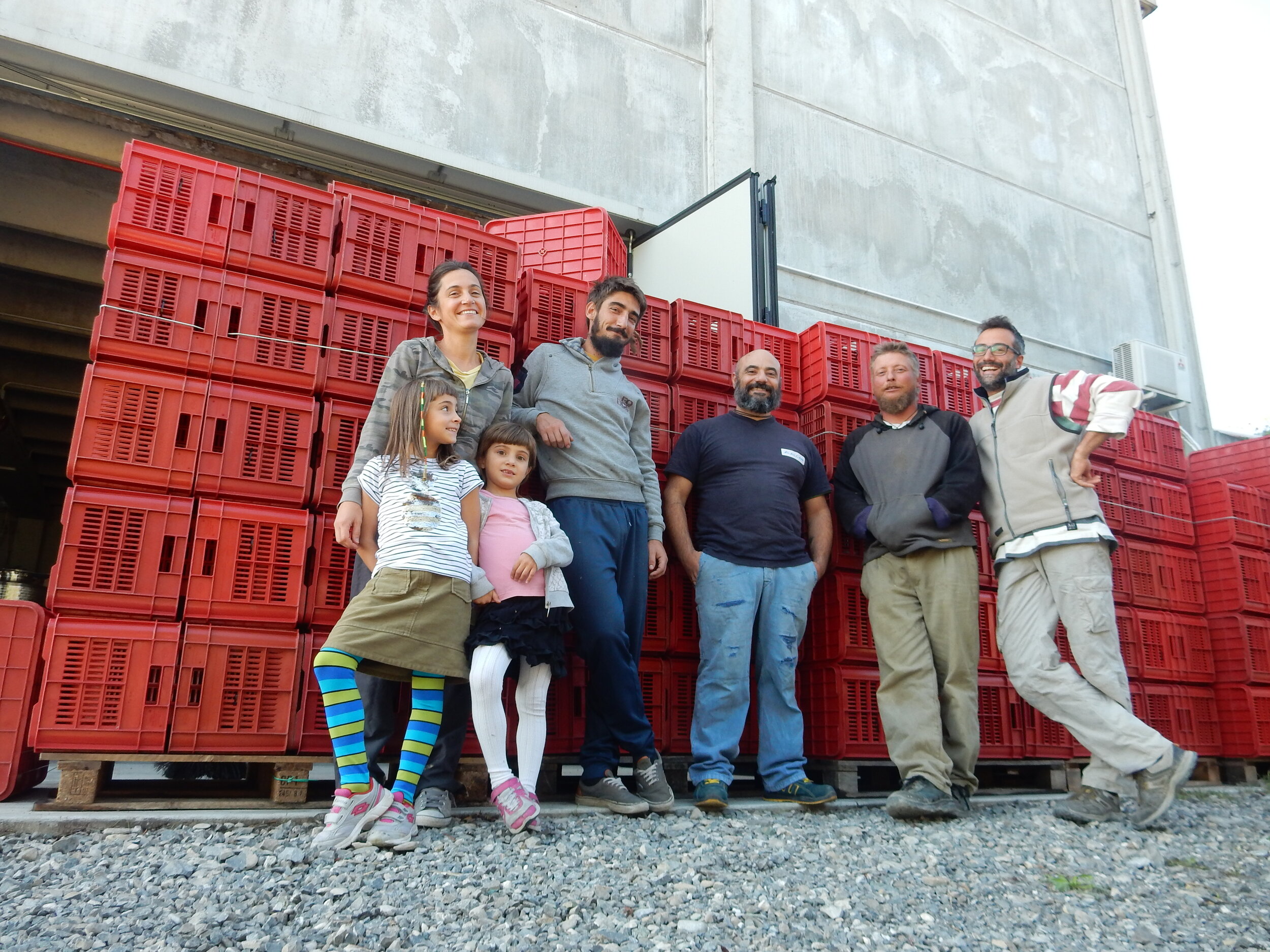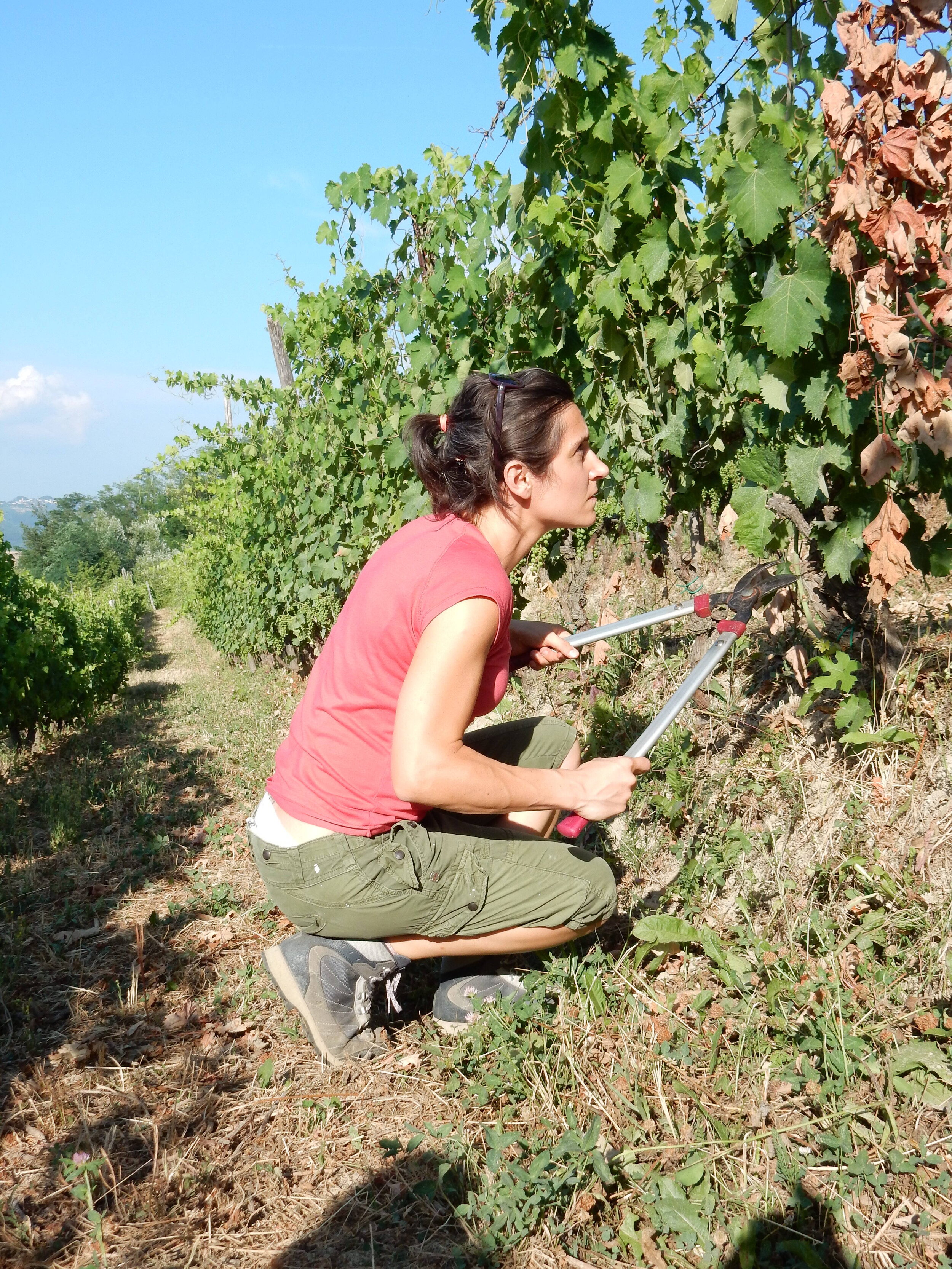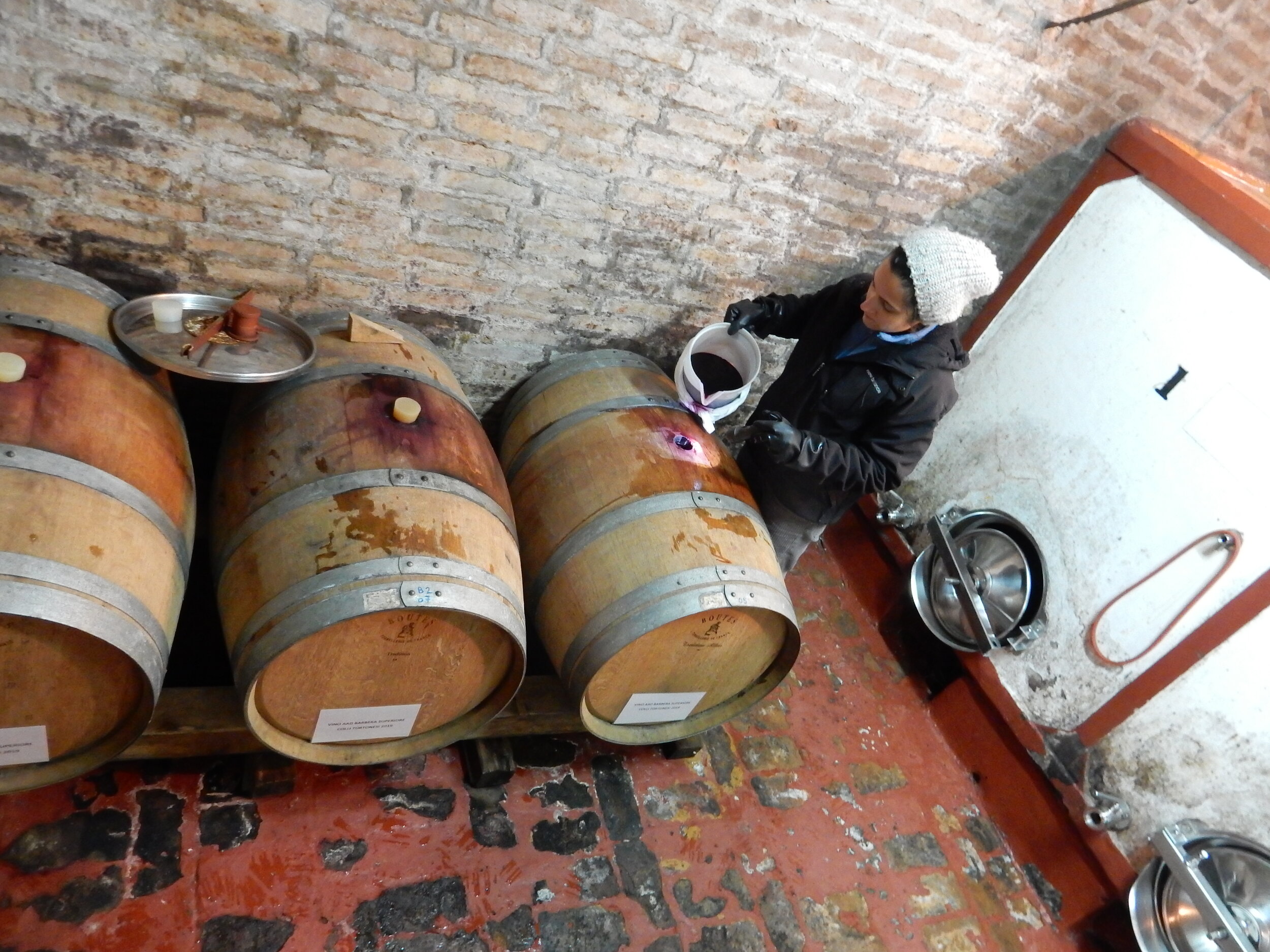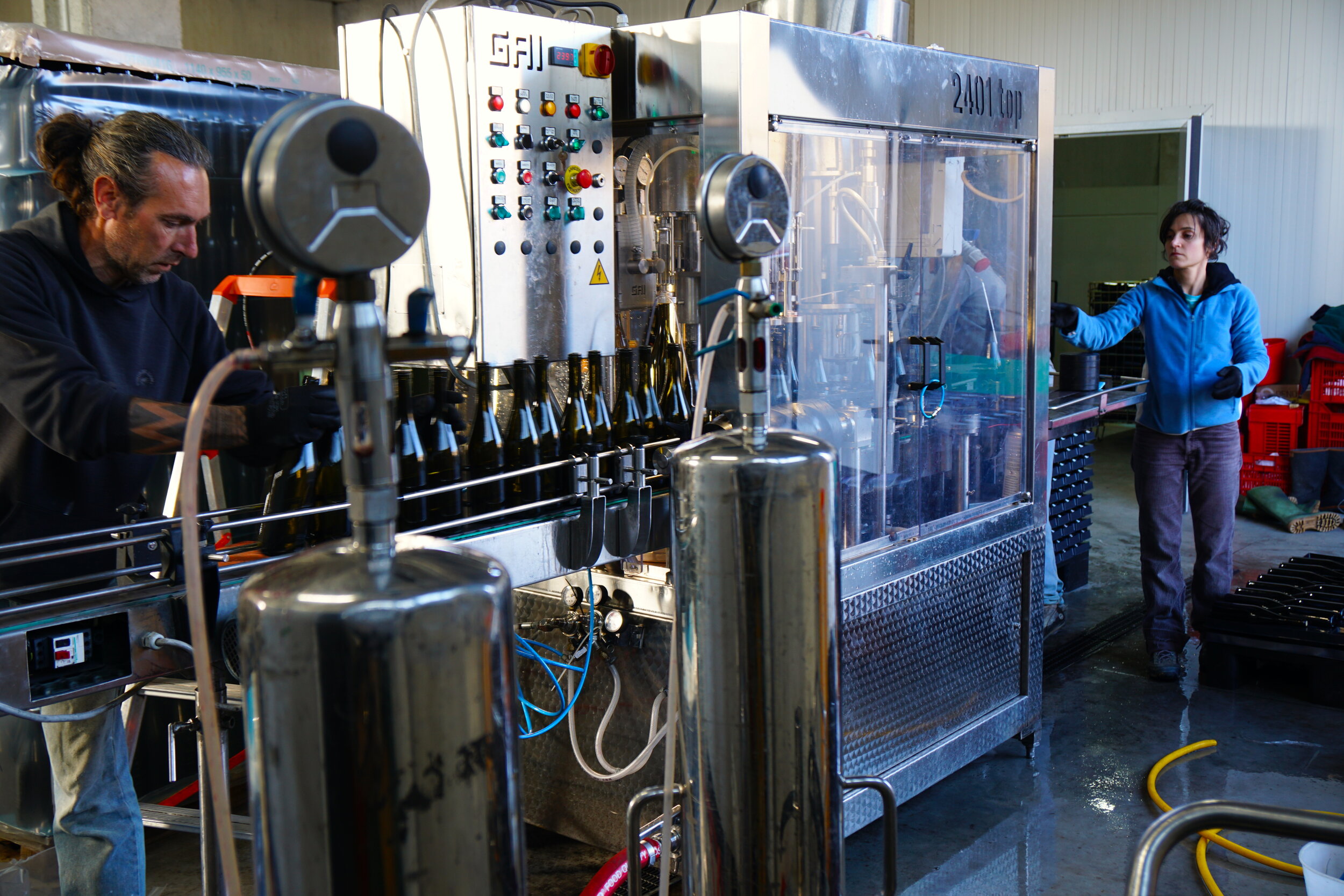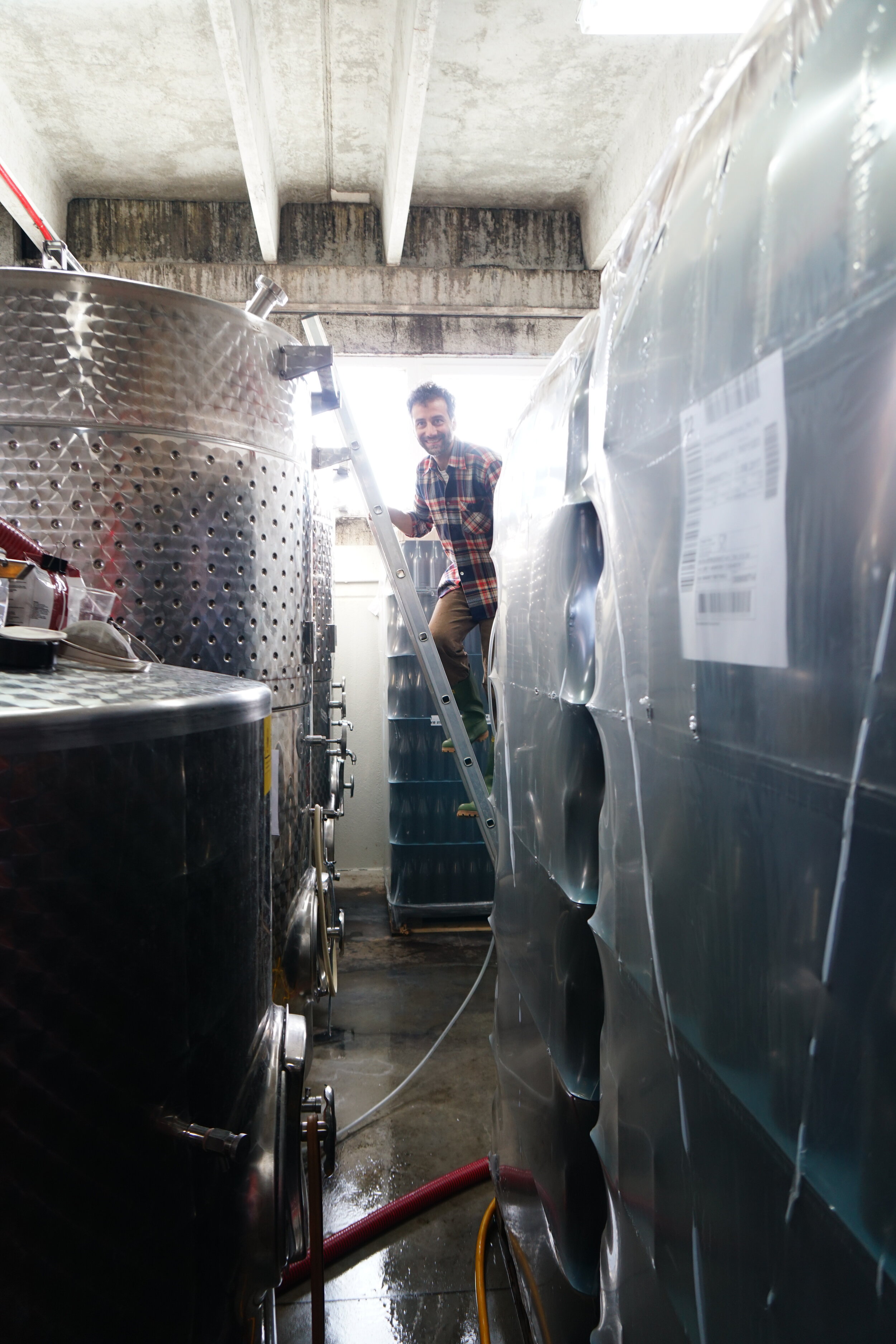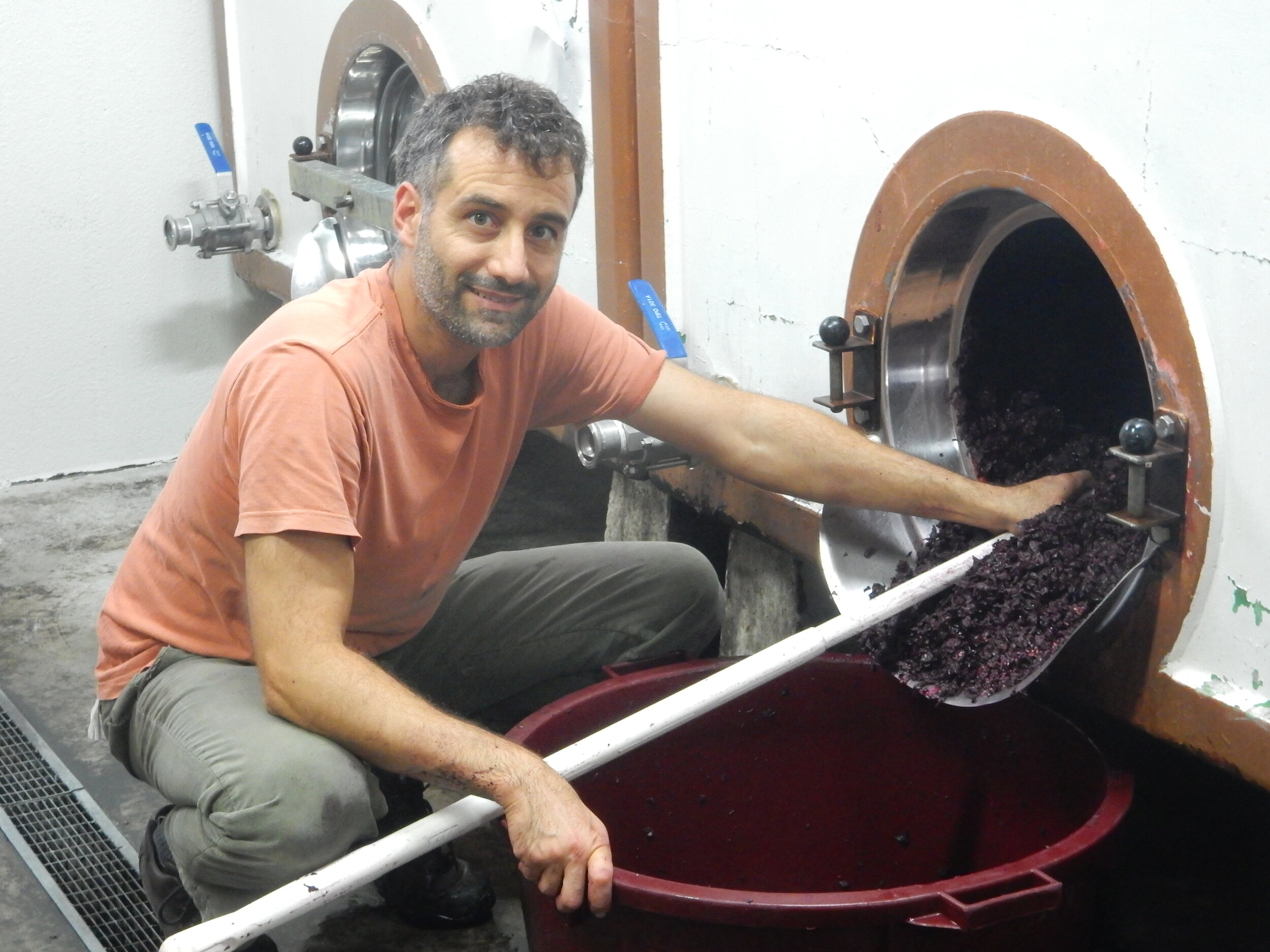Who: Michele Conoscente and Chiara Penati (+ their two young daughters)
Where: Paderna, Alessandria • Piedmont, Italy
Founded:
Land: 6 hectares, 300 meters above sea level
Grapes: Timorasso Cortese, Farovita, Barbera + Dolcetto
Appellation: Colli Tortonesi doc
doc, Rosso Colli Tortonesi doc
Viticulture: Organic
Annual Production:
Born of the passion of a young family, Oltretorrente came into existence when husband and wife team Michele Conoscente and Chiara Penati bought just 1.5 hectares of land on the smooth hills of Tortona Region of Piedmont. Michele had studied oenology at the University of Milan when he met Chiara, with whom he purchased his first vineyard sites. The project began with small plots of indigenous varietals cultivated organically to create artisanal wines reflecting history and place. Today, the winery remains boutique, cultivating grapes from 5 hectares divided into 8 vineyard sites. Growing Cortese, Flavorita,
Barbera, Dolcetto, and Timorasso Derthona exclusively”, Michele and Chiara work painstakingly to produce wines that express the area's unique terroir while incorporating their modern approach to winemaking.
At a time when many winemakers in Italy are choosing to work for larger, more secure wineries, a select few people deviate from the masses. Winemakers Michele and Chiara seem to be a step ahead of the curve, deciding to stay away from the corporate wine world and to instead make small-production, artisanal wines; organically grown, carefully harvested, and diligently observed throughout the vinification process, these wines are not unique but loudly reflect their place of origin.
Each wine reflects this unique region of Piedmont, where the soil is rich in limestone, calcified skeletal fragments, and fossilized shells. Growing at 300 meters above sea level in vineyards with northern and southern exposure, the grapes ripen with optimal sun exposure and climactic influence. Through thoughtful techniques and innovative approaches, Michele and Chiara work to create expressive, original wines that reflect their place of origin, and we think they nailed it.
ABOUT THE COLLI TORTONESI DOC (in respect to Oltretorrente)
History: Established as a DOC in 1973
Vineyard Area: 191 ha / 472 acres (2018)
Production: 6,460 hl / 71,780 cases (2018)
Principal White Grape Varieties: Barbera Bianca, Chardonnay, Cortese, Favorita, Moscato, Müller-Thurgau, Pinot Bianco, Pinot Grigio, Riesling, Sauvignon Blanc, Sylvaner Verde, Timorasso, Welschriesling (Riesling Italico)
Principal Red Grape PrincipaVarieties:
Principle Red Grape Varieties: Aleatico, Barbera, Bonarda, Cabernet Franc, Cabernet Sauvignon, Croatina, Dolcetto, Freisa, Grignolino, Lambrusca di Alessandria, Merlot, Nebbiolo, Pinot Nero, Sangiovese
Its the law:
Minimum alcohol level: 5.0% for Moscato (11.0% potential); 10.0% for Bianco, Cortese tranquillo, Favorita, Chiaretto, and Rosso; 10.5% for Cortese frizzante, Cortese Riserva, Dolcetto, and Terre di Libarna Spumante; , Freisa, Terre di Libarna Rosso, Barbera, and Novello; 11.5% for Terre di Libarna Timorasso and nonsubzone Riserva, and Croatina Riserva; 12.5% for Barbera Superiore, Barbera Riserva, and Monleale Barbera
Aging: For Timorasso, minimum 10 months (ERD = September 1, V+1); for Cortese Riserva, minimum 12 months (ERD = November 1, V+1); for Superiore, minimum 13 months, including 6 months in barrel (ERD = December 1, V+1); for Monleale Barbera, minimum 20 months, including 6 months in barrel (ERD = July 1, V+2); for Timorasso Riserva, minimum 21 months (ERD = August 1, V+2); for Barbera Riserva and Croatina Riserva, minimum 24 months (ERD = November 1, V+2)
(ERD = earliest release date)
Oltretorrente | Bianco
Bianco Colli Tortonesi Doc
They started this wine with the idea
that the old vineyard was entirely Cortese. It passed the inspectors as being Cortese, though, in the characteristic old Italian style of planting, they later discovered that there were some Favorita vines mixed in rows
…. and a few vines for eating as well.
Age of Vineyard: Vineyards were planted between 1959 and 1999 at 6,000 plants/ha.
Harvest: mid-September
Grape(s): Timorasso, Cortese, Favorita, + a splash of Moscato Bianco and Giallo
Bianco Colli Tortonesi is no exception to their practice of spot-on wines: dense in its chalk and mineral content, with concentrated ripe yellow and white fruit, the wine is long, complex, and intriguing; their dedication is pronounced. Knowing this, and being pure people, they changed the name to Bianco. As their Timorasso vines started showing more love, they added some to the mix, currently, it is about equal parts of the 3 varietals with a dash of Moscato Bianco and Giallo. In the future, we will see where it goes, until then, perché no?
The process: The Timorasso is harvested and vinified separately; the others are a field blend. The grapes were whole-cluster pressed (no maceration) and spontaneously fermented in concrete and stainless steel vats with temperature control. Malolactic fermentation did take place. Aging was also in concrete and stainless, for six months on the lees.
Bottling: This takes place usually in April after a light filtration.
Production: Approx. 8,000 bottles and 1,800 magnums are produced yearly
Cool beans: Oltretorente was one of the first to start the rebirth of the area; their Timorasso is not only a single-varietal but also from a single vineyard.
〰️
Cool beans: Oltretorente was one of the first to start the rebirth of the area; their Timorasso is not only a single-varietal but also from a single vineyard. 〰️
Oltretorrente | Timorasso
Timorasso Colli Tortonesi DOC
It takes a strong individual to cultivate the Timorasso grape.
Age of Vineyard: planted between 1996 and 2016, at 300m on silty, calcareous soils—only 100% Timorasso from the north-facing vineyard parcels of Rampone and Simonelli with only 2 hectares total.
Harvest: mid-September
Grape(s): 100% Timorasso
The process: The grapes are whole-cluster pressed. Fermentation was spontaneous with temperature control in concrete vats. In this vintage, malolactic was completed. Aged in concrete for 9 months on the fine lees.
Historically a noble grape, its qualities were perhaps overshadowed by its cranky growing process: asynchronous grape maturation, thin skins, and delicate stems dissuaded growers from continuing cultivation of this grape; however, under the watchful eye of a diligent farmer, Timorasso thrives in the Colli Tortonesi. A contemplative wine, with richness and concentration to the palate that is cut down with a lean, mineral acidity, offers a pleasurable drinking experience to friends around a table, as well as to the most fastidious riesling drinker. A wine that’s lovely in its youth and develops delicious savory qualities with age.
Production: Approx. 6,000 bottles and 200 magnums are produced yearly
Bottling: Bottled with a light filtration and then bottled aged until the release in Fall.
Interesting Info: Timorasso was once the most prized white variety of Alessandria, but after phylloxera, farmers replaced it with the more productive and less noble Cortese grape. Timorasso almost went by the wayside, reaching its lowest point in 2000 at a measly 6 hectares. Twenty years later, it has grown to about 60 hectares, principally in the Tortona region. Per the Colli Tortonesi DOC blending with Cortese is allowed. While few winemakers produce it as a 100% single varietals, it is a grape of the highest quality, giving wines full of citrus, honey, spice, and nuts, with a creamy texture and delicate minerality that only gets better with age.
Oltretorrente | Rosso
Rosso Colli Tortonesi
Michele refers to this wine as the ‘mama.’
It is always present and ready, holds up to time, and never lets you down.
Age of Vineyard: Vineyards were planted between 1955 and 1990 at 6,000 plants/ha. N + S exposure
Harvest: late-September into early-October
Grape(s): Barbera, Dolcetto + bits of Croatina, Freisa, Slarina, Brachetto, and Aleatico,
Oltretorrente’s Rosso blend gives us a delicate interplay of ripe fruit and bright, mineral acidity. For many years, Barbera and Dolcetto were produced without (or with only) minimal wood influence, resulting in high-toned, structured styles. Mass markets seem to have moved towards intensely oaked styles, sappy in their richness with little balance or tannic structure to keep them from unraveling in the glass. By using only concrete to age this wine in, Oltretorrente keeps the classical elements ofBarbera and Dolcetto, with their brightly tart high-note and tight tannin running throughout with a breath from the porous concrete, which gives the wine depth, roundness, and a pleasant texture. The blend is respectfully 90% Barbera and 10% Dolcetto, though co-planted throughout the vineyards, there bits of Croatina, Freisa, Slarina, Brachetto, and Aleatico, which add a bit of fun to the wine.
The process: The bunches are destemmed, and fermentation is spontaneous in concrete vats, with macerations lasting 1 month. Aging occurs in concrete, kept on the fine lees for 6 months.
Bottling: This takes place usually in April after loose filtration.
Production: Approx. 5,000 bottles and 900 magnums produced yearly
Oltretorrente | Barbera
Barbera Superiore Colli Tortonesi DOC
Chalky, clay-influenced soils make the perfect base for Barbera that conveys high-toned, bright red fruit and gives a textural sense of place.
Age of Vineyard: planted between 1920 and 1960, southern exposure, in calcareous soils.
Harvest: late-September
Grape(s): Barbera
The Barbera Superiore functions as the calling card for the Oltretorrente winery, representing their oldest vines and the grape varietal most commonly associated with the Colli Tortonesi. Michele takes care of the wine down in the cellar, barreling the liquid in French oak after alcoholic fermentation and maceration occur in concrete tanks. All of the wine aged in neutral barrels after fermentation in concrete. The result is a wine with balanced richness and density, harmoniously fusing the high-toned, acidic-crispness typical of Barbera from this region, with the length and elegance of world-class wines.
The process: The grapes are destemmed and are fermented spontaneously in concrete tanks. Maceration for about 60 days. The wine is aged for approx—18 months in used barriques of 225 and 300L.
Bottling: Bottled after a loose filtration and then bottled aged until the release the following winter
Production: Approx. 3,500 bottles produced yearly
Cool Beans: Some of the old plants of Barbara are trained as bush-vine; this is rarely seen in Piedmont.
“M E D I A
SLOW WINE REVIEW- Barbera Superiore 2015
’Colli Tortonesi Barbera Superiore 2015 has a clean and decisive fruit, without any kind of deviation; the mouth is juicy, mineral and intriguing. One of the best Barbera tasted this year.’
”
Get your shelf talker here!
Oltretorente
Via Cinque Martiri, 86, 15050 Paderna AL, Italy
+39 339 819 5360
[links + doc info credit: italianwinecentral.com]
